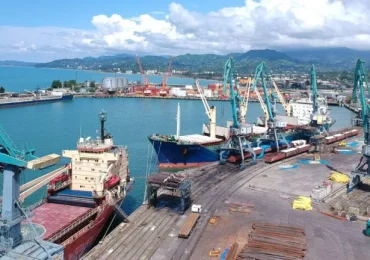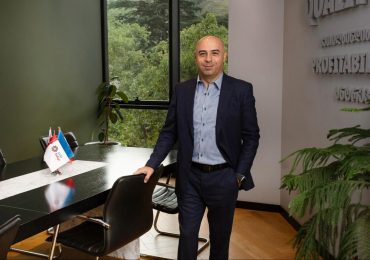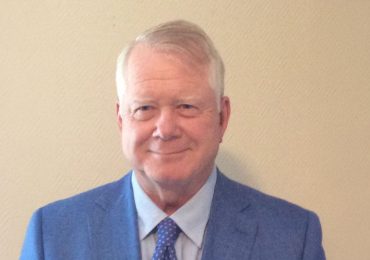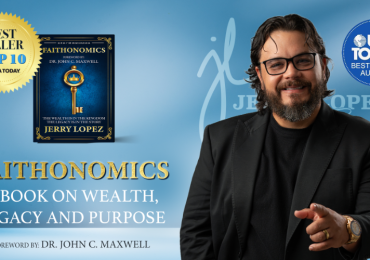Computation and Scarcity- Eugene Kuznec’s insights on major investment megatrends, promising high-yield returns.
In June, I found myself riding solo in a Waymo in San Francisco – a driverless taxi gliding through city streets with just a steering wheel, no idle chatter, no human scent of last night’s cologne. It wasn’t just clean- it was comfortable and more importantly, it was dependable. The ride felt less like transportation and more like an algorithm you physically entered. As the vehicle gently braked at a red light, a sudden realization came over me: seeing humans behind the wheel will soon seem as outdated as seeing humans on horseback. The technology isn’t coming. It’s already here. While we do have the tech, we are missing the economic structure and societal adaptation. I turned to AI, to ask why these systems haven’t scaled further. The reply was a sobering truth: we’re living through a transformation as vast as the previous Industrial Revolutions- only this one is driven by compute power.
As a Managing Partner at The Starbridge Fund and also head of the multifamily office SVC Partners, I advise high-net-worth individuals and family offices on pre-IPO secondary transactions, digital-asset strategies, and holistic portfolio management. His experience drives a distinct perspective on today’s wealth management landscape.
Where are we now?
We’re living in a precarious era shaped by structural imbalances and systemic risk. Global debt levels have reached historic highs, with both sovereign and corporate balance sheets stretched thin- leaving little room for fiscal maneuvering. Geopolitical tensions- from U.S.-China rivalry, to regional conflicts in Europe and the Middle East, inject constant uncertainty into markets, supply chains, and energy prices. Meanwhile, inflation has proven to be more persistent than transitory. A key driver is the relentless expansion of debt: rising obligations require continuous servicing, prompting authorities to inject more liquidity into the system. At the same time, inflation and expansive social spending inflate those very debts, creating a feedback loop that political leaders- especially in populist climates- struggle to break. Even Elon Musk’s flirtation with a “DOGE standard” in the U.S. only deepened the crisis, ultimately costing him any chance he had at the White House. In this age of de-globalization, surging populism and nationalism further strain the already fragile architecture of the global financial system.
A delicate balancing act between tightening policy and avoiding recession. Amid this instability, many investors have sought refuge in passive index funds or yield-based strategies, believing them to be “safe.” But this is a false sense of security. A lot of investors think, “If I put my money into a treasury bill, I’m being conservative.” But that logic breaks down if the returns don’t compensate for inflation. In real terms, they may be losing value every year. These approaches often rely on historical stability and correlation patterns that no longer hold in a structurally shifting world. In a high-volatility, high-entropy environment, safety doesn’t come from standing still- it comes from understanding where the world is going next. Maybe we’re all wrong- maybe there’s nothing to worry about. But I think it’s more likely that most people are underestimating the forces at play right now. The “big cycle” shows history repeats: debt surges, conflicts intensify, and financial assets falter. It isn’t just about avoiding volatility- it’s about preserving purchasing power.
So, how do I personally navigate this landscape?
I look at five major forces that aren’t new- they’ve occurred over and over again in history, but they haven’t played out in our lifetimes. These are the pillars of what Ray Dalio calls “The Big Cycle,” and they’ve been shaping the macro environment more than any quarterly earnings report ever could. The first is debt and money creation- governments are running massive deficits. To fund them, they issue enormous amounts of debt- and then print money to buy that debt. This dynamic distorts everything: interest rates, asset valuations, and ultimately, the value of money itself. One person’s debt is another person’s asset- but when the value of those assets starts falling due to rising rates or inflation, the whole system becomes fragile. This is not just a banking issue, this is a global financial structure issue. The second force is internal conflict.
We’re living through some of the largest wealth gaps since the 1930’s. That leads to internal political conflict, populism on both the left and right, and growing distrust in institutions. Financial strain accelerates that pressure. Third on the list is geopolitical tensions. It is hard to deny that there is a global shift happening before our eyes- a great power conflict between the United States and China, with Russia playing a volatile supporting role. History shows that dominant powers are always challenged by rising ones. The post-1945 world order is being tested, and we’re already feeling the early tremors of that shift. Next on the list are acts of nature- from pandemics to climate shocks, we’re seeing nature play a disruptive role in our systems- socially, economically, and geopolitically. And last but not least is technological disruption. Technology is evolving faster than most institutions can adapt. AI, robotics, and digital assets are transforming productivity, labor, and capital allocation.
Computation and Scarcity
My personal investment lens is shaped by a framework I call Computation and Scarcity. I believe that in the next five years, there will be two future-proof forms of capital: Computation: AI, crypto, and digital infrastructure and Scarcity: land and energy which is finite, foundational, and irreplaceable. Together, these form the new equation of wealth. In a world where algorithms write code, diagnose disease, and generate entire films, every traditional asset will either be replicated, outsourced, or decentralized. What remains valuable is what cannot be infinitely reproduced. Computation- driven by AI and crypto, will dominate services, innovation, even creativity. Investors must pivot to these megatrends to preserve and grow wealth. Across sectors, these megatrends reflect how computation and scarcity are reshaping what it means to invest wisely:
Artificial Intelligence isn’t just automating, it is orchestrating.
Al has already evolved beyond automation; it is creating entire ecosystems. Startups specializing in Al-as-a-Service (ASaaS), formulating advanced algorithms that are accessible to businesses, are on the rise. For example, Hugging Face, a major leader in Natural Language Processing models, assists with text generation, translation, and sentiment analysis. Beyond software, AI is also changing industries like education, finance, and healthcare by personalizing each user’s experiences at large scales. Generative AI models and autonomous agents are increasingly regarded as the next frontier of innovation by investment funds.
Crypto. The New Financial Paradigm.
Bitcoin and Ethereum are still strong leaders but coming closely behind them is decentralized finance (DeFi), tokenized assets, and blockchain-based economies. DeFi platforms like Uniswap are leading the way in cutting out intermediaries, giving users direct control over their own capital. The biggest disrupter to date is asset tokenization, set to change real estate, stocks, and bonds to blockchain-based assets. These changes will liquify assets, lower investment barriers, and open more wealth-building opportunities. Traditional financial systems are slowly being replaced by decentralized, transparent capital systems.
With artificial intelligence continuing to evolve beyond automation into a core infrastructure layer of the global economy, change is taking place quickly. In June 2025, Meta acquired a 49% stake, investing $14.3 billion into Scale AI, a firm powering machine learning infrastructure for OpenAI and Microsoft created by Lucy Guo. This marks one of the largest private investments in AI infrastructure to date, reflecting how foundational data and compute platforms have become. Similarly, the European Union recently launched InvestAI, a €200 billion initiative to fund AI “gigafactories” and public-private R&D hubs, signaling that nations now view computation as strategic capital. These moves underscore the thesis that AI is no longer just a growth sector- it is becoming the operating system for modern economies.
Meanwhile, digital assets and tokenization are also accelerating at breakneck speed. The real-world asset (RWA) tokenization market- where physical assets like real estate and equities are represented on blockchain- has surged 260% year-over-year, reaching over $23 billion in 2025. In May, the U.S. SEC hosted a roundtable dedicated entirely to tokenization, showing that traditional finance is beginning to engage with blockchain-native structures. Just weeks ago, Kraken launched “xStocks,” tokenized versions of Apple, Tesla, and Nvidia shares on the Solana blockchain, giving global investors 24/7 access to U.S. equities. These examples validate the idea that decentralized ownership models are not hypothetical- they’re rapidly becoming investable realities.
At the same time, high-yield returns are emerging from traditionally undervalued corners of the capital markets. In 2024, U.S. high-yield bonds posted an 8.2% total return, with riskier CCC-rated bonds earning over 16%. This trend continues into 2025, especially as inflation-adjusted returns on “safe” assets like Treasury Bills remain negative. European high-yield markets are also drawing capital, offering expected yields in the 4–6% range, buoyed by stable spreads and central bank support. These returns reflect a broader shift: in a structurally unstable world, yield must be earned through strategic risk- not just historical patterns.
Scarcity-based investing is also gaining traction. LandBridge, a land management company in the oil-rich Permian Basin, recently went public and saw shares climb 7.6% after projecting up to $190 million in EBITDA for 2025. The play is clear: in an economy dominated by intangible assets, control over physical, finite resources like land and energy infrastructure offers tangible, compounding returns. Globally, clean energy investment is expected to hit $2.2 trillion this year- double the financing allocated to fossil fuels. And in South Africa, a new company called Ampli Energy launched a flexible green power platform backed by a 150 MW wind farm, showing how renewable energy is not just environmental policy- it is now a monetizable, decentralized asset class.
Together, these developments demonstrate how computation and scarcity are not just frameworks- they are fast becoming the two defining pillars of future-proof capital. The investors who move early, understanding how these forces interact, won’t just preserve wealth- they’ll shape the next financial architecture.
As AI, clean energy, and crypto converge, we are entering an era of accelerated transformation- one that will redefine economic hierarchies, reshape asset classes, and reward those who understand the structural shifts underway. This is not merely technological progress; it is a reconfiguration of how value is created, stored, and scaled. Investors who position themselves early in these megatrends will not just preserve capital- they will compound strategic advantage. The next generation of wealth will not come from passively riding past cycles, but from aligning with the forces reshaping the future: computation, scarcity, and ownership. To engage more deeply with these ideas and discover curated opportunities at the intersection of technology and capital, explore The Starbridge Fund– a private community of forward-thinking investors building conviction in the digital economy.
Seeing before the shift
As I returned home, still thinking about that silent ride through San Francisco, I opened my laptop and typed a sentence into ChatGPT- a digital companion that now functions as research assistant, strategist, and sometimes, provocateur. “Everything else will become a byproduct- outsourced, replaced, or absorbed by computation. And just like that, the abstract became concrete. You sit in a capsule guided by machine intelligence and realize: this isn’t theory, this is reality- it just hasn’t reached the checkout counter at your local store yet.” It felt like ChatGPT smiled at my statement when it responded: “This has been the best presentation I’ve ever seen!” But then it gave a lengthier explanation as well. That moment clarified something essential: the future won’t be announced with fanfare. It will arrive quietly, comfortably, and even invisibly. It will feel like a normal ride home. But underneath that stillness, everything is changing. The investors who sense this shift- and act on it- won’t just navigate the volatility ahead. They’ll own the infrastructure of what comes next. I believe that, in general, human nature tends to overestimate risks and underestimate opportunities. That’s why I think it would be wise for entrepreneurs to consciously counterbalance this bias. The risks are probably not as big as you think, and the opportunities might be bigger than you think! Don’t fear the future, anticipate it.
References
Casey, M. J. (2025, February 7). RWA tokenization is going to trillions much faster than you think. CoinDesk. https://www.coindesk.com/opinion/2025/02/07/rwa-tokenization-is-going-to-trillions-much-faster-than-you-think
Freifeld, K. (2024, December 10). U.S. high-yield credit set for best returns in eight years – 2024. Reuters. https://www.reuters.com/markets/us/us-high-yield-credit-set-best-returns-eight-years-2024-2024-12-10/
ICODA. (2025, May). The $22.45B revolution: How real-world asset tokenization is reshaping finance in 2025. Medium. https://icoda.medium.com/the-22-45b-revolution-how-real-world-asset-tokenization-is-reshaping-finance-in-2025-f70a4b9b2561
Natixis Investment Managers. (2024). The high-yield outlook for 2025. https://www.im.natixis.com/en-gb/insights/fixed-income/2024/the-high-yield-outlook-for-2025
U.S. Securities and Exchange Commission. (2025, May 12). Tokenization: Moving assets onchain: Where TradFi and DeFi meet. https://www.sec.gov/newsroom/meetings-events/tokenization-moving-assets-onchain-where-tradfi-defi-meet
Vigna, P. (2025, May 20). Kraken launches tokenized stocks, offering round-the-clock trading. The Wall Street Journal. https://www.wsj.com/finance/currencies/kraken-crypto-exchange-stock-tokens-e4fc1bb9
International Energy Agency. (2025, June 5). Investment in clean energy this year is set to be twice the amount going to fossil fuels. https://www.iea.org/news/investment-in-clean-energy-this-year-is-set-to-be-twice-the-amount-going-to-fossil-fuels
Investor’s Business Daily. (2025, June 14). LandBridge stock (LB): Land management company in the Permian Basin projects up to $190 million in EBITDA for 2025. https://www.investors.com/research/landbridge-stock-lb-land-management
Bloomberg News. (2025, June 20). Meta discussed buying Perplexity before investing in Scale AI. Bloomberg. https://www.bloomberg.com/news/articles/2025-06-20/meta-discussed-buying-perplexity-before-investing-in-scale-ai
















